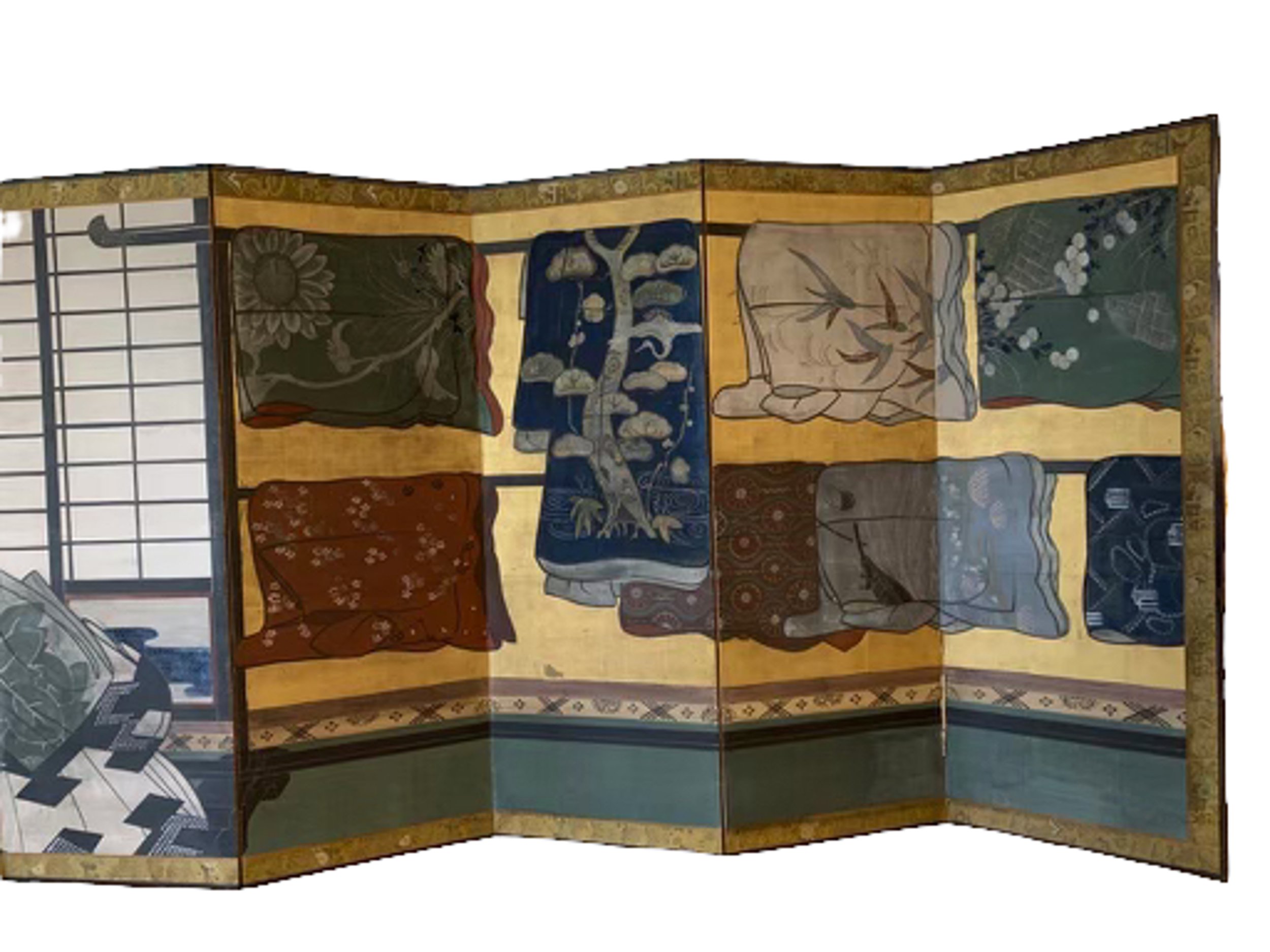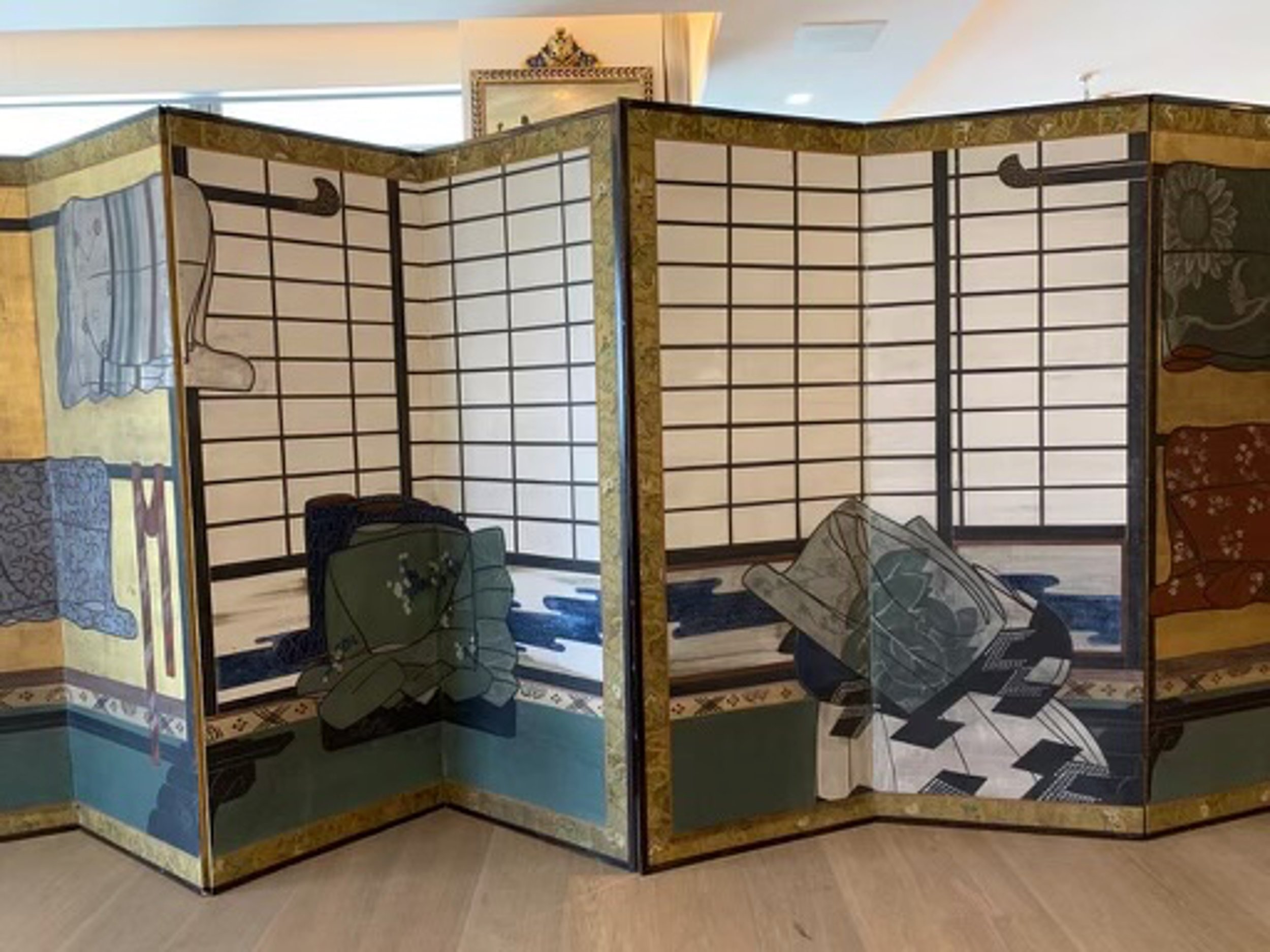 Image 1 of 24
Image 1 of 24

 Image 2 of 24
Image 2 of 24

 Image 3 of 24
Image 3 of 24

 Image 4 of 24
Image 4 of 24

 Image 5 of 24
Image 5 of 24

 Image 6 of 24
Image 6 of 24

 Image 7 of 24
Image 7 of 24

 Image 8 of 24
Image 8 of 24

 Image 9 of 24
Image 9 of 24

 Image 10 of 24
Image 10 of 24

 Image 11 of 24
Image 11 of 24

 Image 12 of 24
Image 12 of 24

 Image 13 of 24
Image 13 of 24

 Image 14 of 24
Image 14 of 24

 Image 15 of 24
Image 15 of 24

 Image 16 of 24
Image 16 of 24

 Image 17 of 24
Image 17 of 24

 Image 18 of 24
Image 18 of 24

 Image 19 of 24
Image 19 of 24

 Image 20 of 24
Image 20 of 24

 Image 21 of 24
Image 21 of 24

 Image 22 of 24
Image 22 of 24

 Image 23 of 24
Image 23 of 24

 Image 24 of 24
Image 24 of 24

























17th Century 'Late 1600s', Japanese Edo Period 12-Panel Folding Screen Painted
A pair of 17th Century (Late 1600s) Japanese Edo screens made of 12-panels. This folding silk screen is painted on a gold leaf background. It has a silk border and lacquered-wood frame. The back of the panels is also upholstered with elaborated silk fabric. The screen is depicting a scene "The Washing of the Kosodes", a variety of silk kosodes, that have extensive embroidery and decorative elements draped on a lacquered iko (clothes rack) that are being hung to dry. The four centered panels are depicting a shoji screen backdrop and some kosodes being washed. There is water on the floor. This pair is one of the few and largest panels of this style ever seen. Screens depicting garments, usually without human figures, were first painted around the early seventeenth century. The earliest examples are painted with kosode draped on racks against a plain gold background. The clever artist painted these screens in a way that they can be displayed partially opened or fully opened. Below are the measurements of both ways in which the screens can be displayed. In the picture of the living room the screen is set up in its shorter display option.
Fully extended screens, 24.4 ft long (292 in)
Eight of the Panels – 24in and Four panels of each screen is 25in
90in Height with stand
68.5in Height screen without stand
Partially open (The overall length is 198.5in) - As shown behind the sofa
A pair of 17th Century (Late 1600s) Japanese Edo screens made of 12-panels. This folding silk screen is painted on a gold leaf background. It has a silk border and lacquered-wood frame. The back of the panels is also upholstered with elaborated silk fabric. The screen is depicting a scene "The Washing of the Kosodes", a variety of silk kosodes, that have extensive embroidery and decorative elements draped on a lacquered iko (clothes rack) that are being hung to dry. The four centered panels are depicting a shoji screen backdrop and some kosodes being washed. There is water on the floor. This pair is one of the few and largest panels of this style ever seen. Screens depicting garments, usually without human figures, were first painted around the early seventeenth century. The earliest examples are painted with kosode draped on racks against a plain gold background. The clever artist painted these screens in a way that they can be displayed partially opened or fully opened. Below are the measurements of both ways in which the screens can be displayed. In the picture of the living room the screen is set up in its shorter display option.
Fully extended screens, 24.4 ft long (292 in)
Eight of the Panels – 24in and Four panels of each screen is 25in
90in Height with stand
68.5in Height screen without stand
Partially open (The overall length is 198.5in) - As shown behind the sofa
A pair of 17th Century (Late 1600s) Japanese Edo screens made of 12-panels. This folding silk screen is painted on a gold leaf background. It has a silk border and lacquered-wood frame. The back of the panels is also upholstered with elaborated silk fabric. The screen is depicting a scene "The Washing of the Kosodes", a variety of silk kosodes, that have extensive embroidery and decorative elements draped on a lacquered iko (clothes rack) that are being hung to dry. The four centered panels are depicting a shoji screen backdrop and some kosodes being washed. There is water on the floor. This pair is one of the few and largest panels of this style ever seen. Screens depicting garments, usually without human figures, were first painted around the early seventeenth century. The earliest examples are painted with kosode draped on racks against a plain gold background. The clever artist painted these screens in a way that they can be displayed partially opened or fully opened. Below are the measurements of both ways in which the screens can be displayed. In the picture of the living room the screen is set up in its shorter display option.
Fully extended screens, 24.4 ft long (292 in)
Eight of the Panels – 24in and Four panels of each screen is 25in
90in Height with stand
68.5in Height screen without stand
Partially open (The overall length is 198.5in) - As shown behind the sofa





